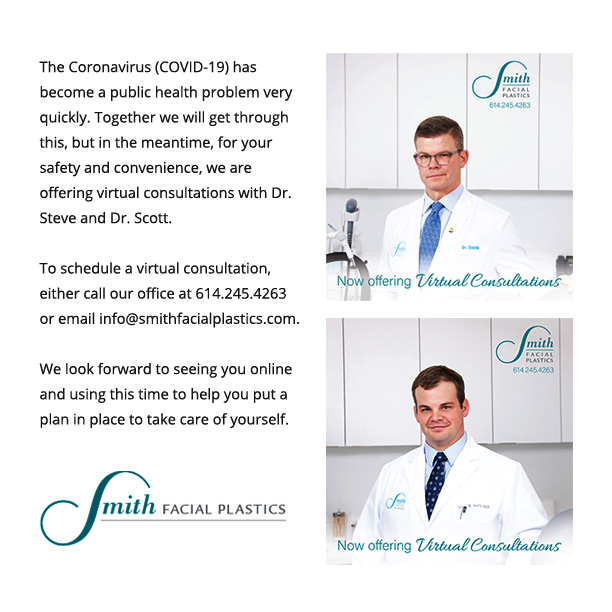Six Plastic Surgery Misconceptions – Blog
Many people have opinions about plastic surgery. In a lot of cases, those opinions aren’t necessarily shaped by facts and reality, but instead by common misconceptions.
Whether you’re considering having facial plastic surgery or have recently had it and are facing criticism from family and friends, it can be helpful to clear up a few very common misconceptions about it.
It’s Something Only Women Think About
Perhaps because so many beauty routines or appearance-focused services are targeted at women, there’s also a misconception that it’s only women who are thinking about plastic surgery or who ever decided to go through with a procedure. In fact, plastic surgery is becoming more and more common with male patients, as are minimally invasive treatments, such as Botox.
Since the beginning of the 21st century, the number of male plastic surgery patients has continued to climb year after year, according to statistics from the American Society of Plastic Surgeons. One of the more common reasons why male patients decide on plastic surgery is to get ahead at work, as clients and employers are getting younger and younger and some men feel pressure to look as youthful as they can.
It’s Always High Risk
Whether it’s rhinoplasty or a facelift, there is always some degree of risk involved in facial plastic surgery. But, the risks of surgery are largely determined by a patient’s overall health and by the surgeon he or she decides to work with. Some people just aren’t good candidates for surgery. For example, active smokers should quit and wait at least two weeks after quitting to schedule surgery, as using tobacco products increases their risk of wound healing issues. People who have certain long-term conditions or who need to continually take certain medications may also not be suitable candidate for surgery.
Working with a surgeon who is experienced and who has the appropriate training will also cut down on the riskiness of a particular procedure. The same is true of deciding to work in a facility that is fully accredited. While you can’t guarantee that a procedure will go as smoothly as you hoped, there are several things you can do to increase the likelihood of a positive outcome.
It’s Only Done for Cosmetic Purposes
People commonly think that those who have plastic surgery do so only to improve their looks. But, plastic surgery can also improve the way certain features function or can correct injuries connected to facial trauma, such as dog bite scars or damage created during a car accident. One example of a plastic surgery improving a person’s quality of life is when someone has rhinoplasty to fix breathing problems in his or her nose. Although a surgery such as otoplasty is often performed to fix cosmetic issues, such as ears that stick out, it can also greatly improve a child’s quality of life, by helping him or her feel more confident and by preventing any future bullying from happening.
Everyone Will See Your Scars
Some people worry that they will end up looking like Frankenstein’s monster after their surgery, with a large, visible scar or incision line running across their face or neck. Usually, though, the reverse is the case. Many plastic surgery scars are barely visible, because they are concealed or because they are located in an out of the way area. The incisions made during an eyelid surgery, can be made on the inside of the eyelid or positioned so that the creases of the eyes naturally cover them up. Facelift or brow lift incisions can be made in the hairline, while rhinoplasty incisions can be inside the nose, hidden from view, or located at the base of the nose and barely detectable.
It’s Going to Be Replaced by Non-Surgical Options
It’s true that there are more non-surgical options available today than in years past, from laser treatments to injectables. But, for the most part, these treatments aren’t designed to replace facial plastic surgery. Instead, they can be a temporary alternative or an option for people who have already had surgery and who are looking to maintain or enhance their results.
All Surgeons Are the Same
One of the more risky misconceptions about plastic surgery is that a surgeon is a surgeon is a surgeon. In fact, there are distinct differences when it comes to surgeons, which are reflected in how they identify themselves. For example, facial plastic surgeons who are board certified have completed extra years of surgical training in facial plastic surgery, while a general plastic surgeon has completed several years of training in all areas of plastic surgery, and a general surgeon has had surgical training that didn’t necessarily include plastic surgery.
A cosmetic surgeon hasn’t had formal training in plastic surgery at all, but may be a doctor in another specialty. When looking for a surgeon, you generally want the one with the most training and experience, meaning it’s a good idea to look for someone who calls him or herself a facial plastic surgeon.
In Ohio , Dr. Stephen Smith is a facial plastic surgeon, board certified by the American Board of Otolaryngology. A fourth-generation Ohio plastic surgeon, he’s available to address any concerns you have about surgery or to answer your questions at two locations. For a consultation at the practice in Gahanna, Ohio, call 614-245-4263. To schedule an appointment in Columbus, Ohio, call 614-678-7180 today.


